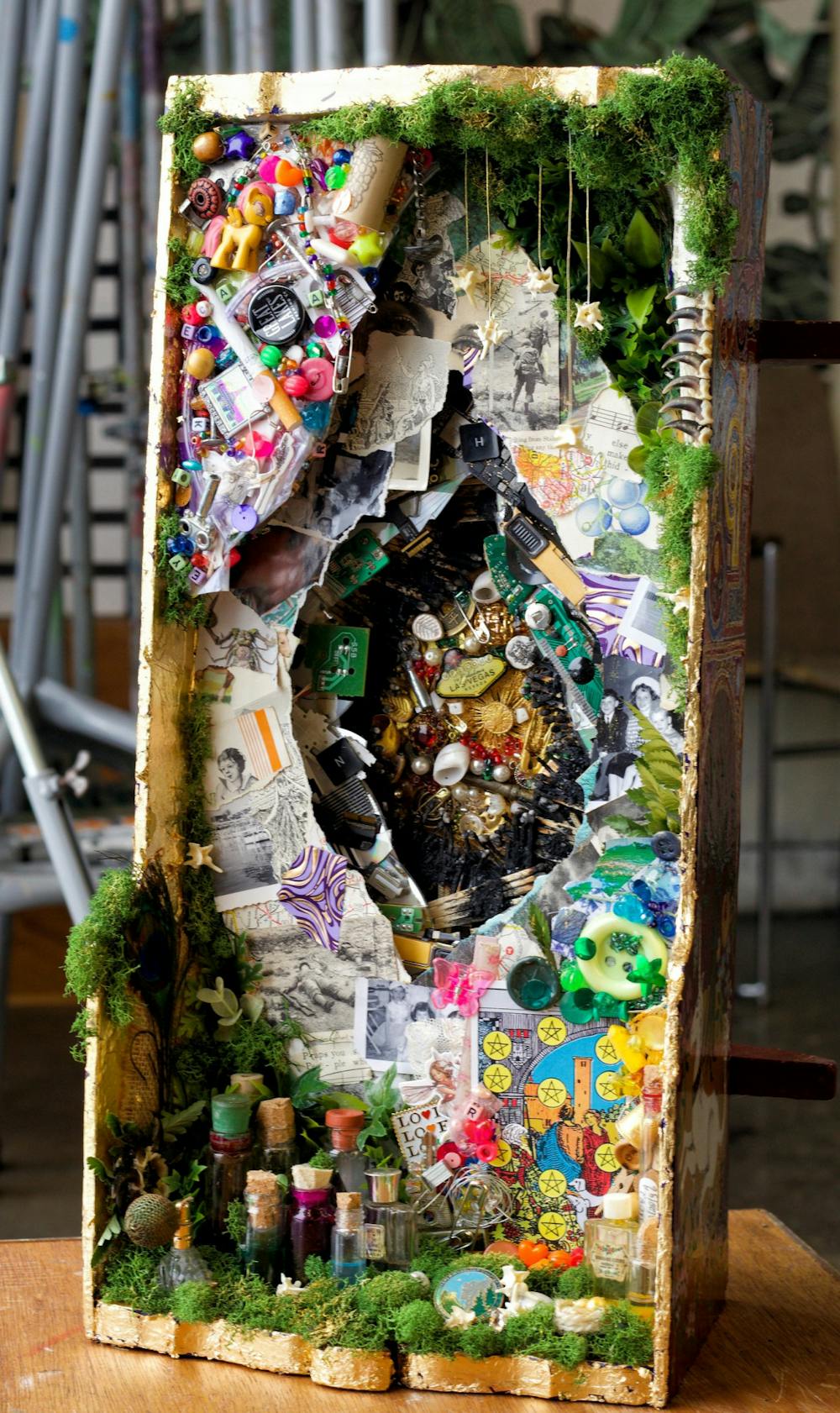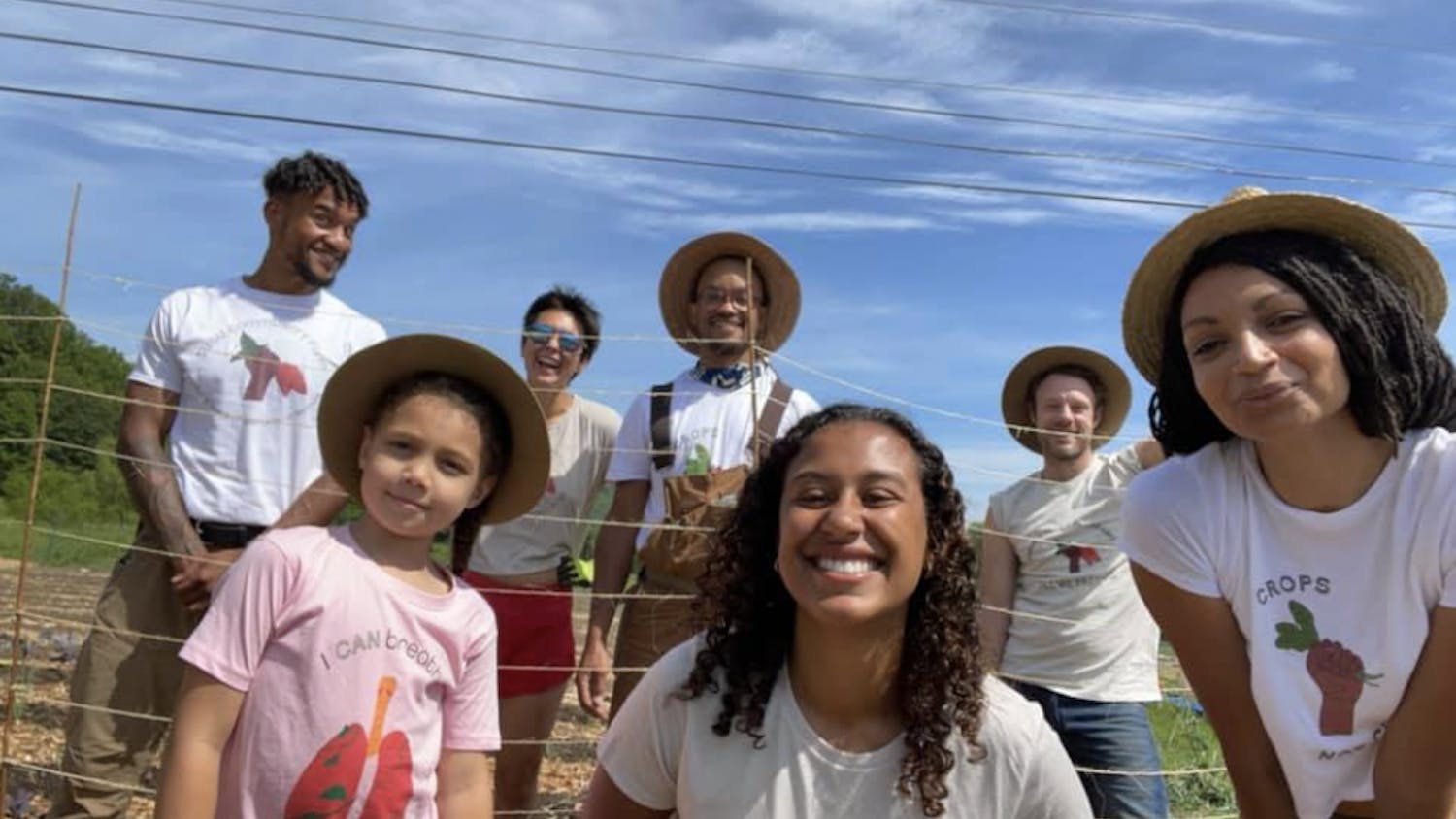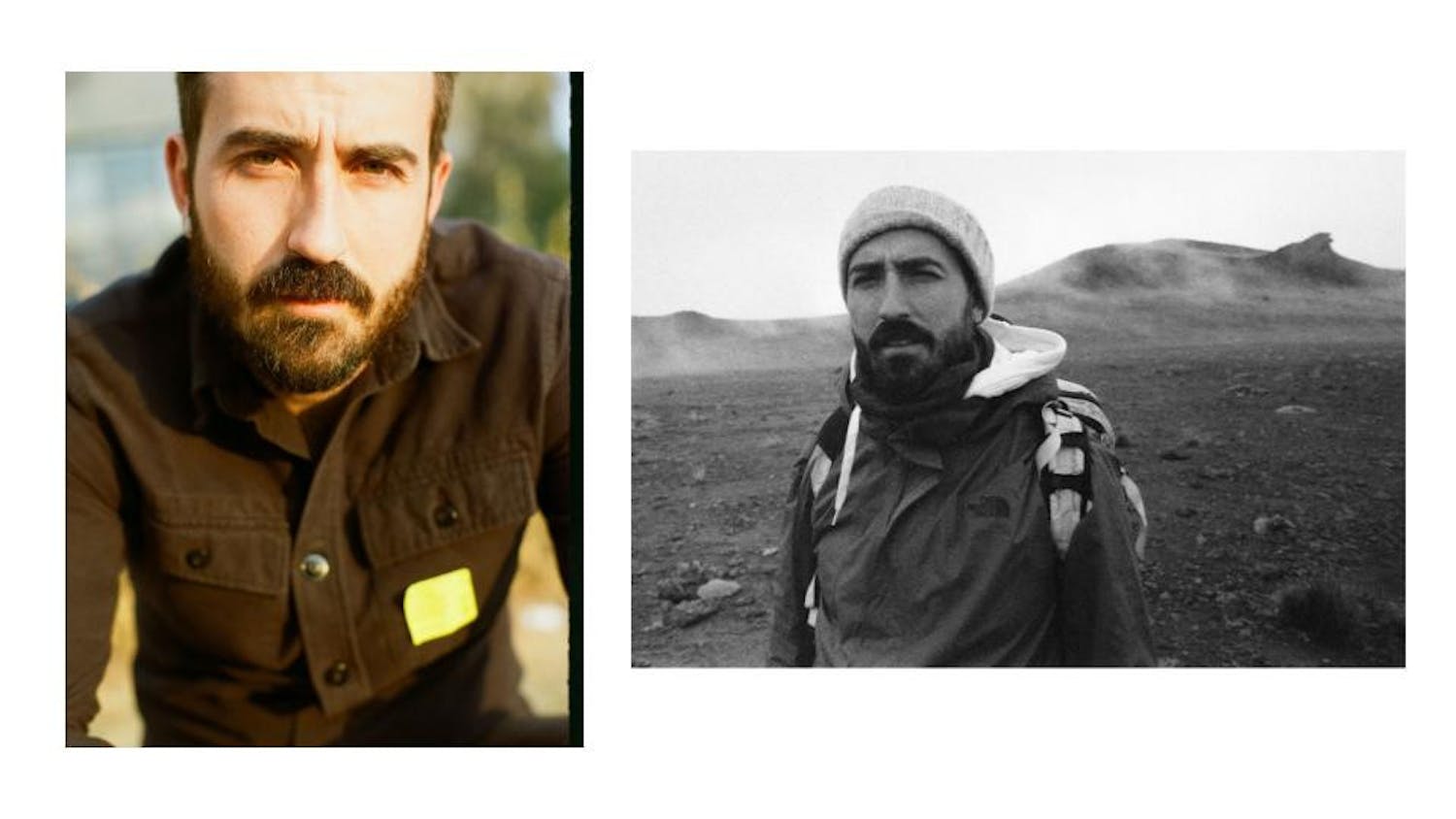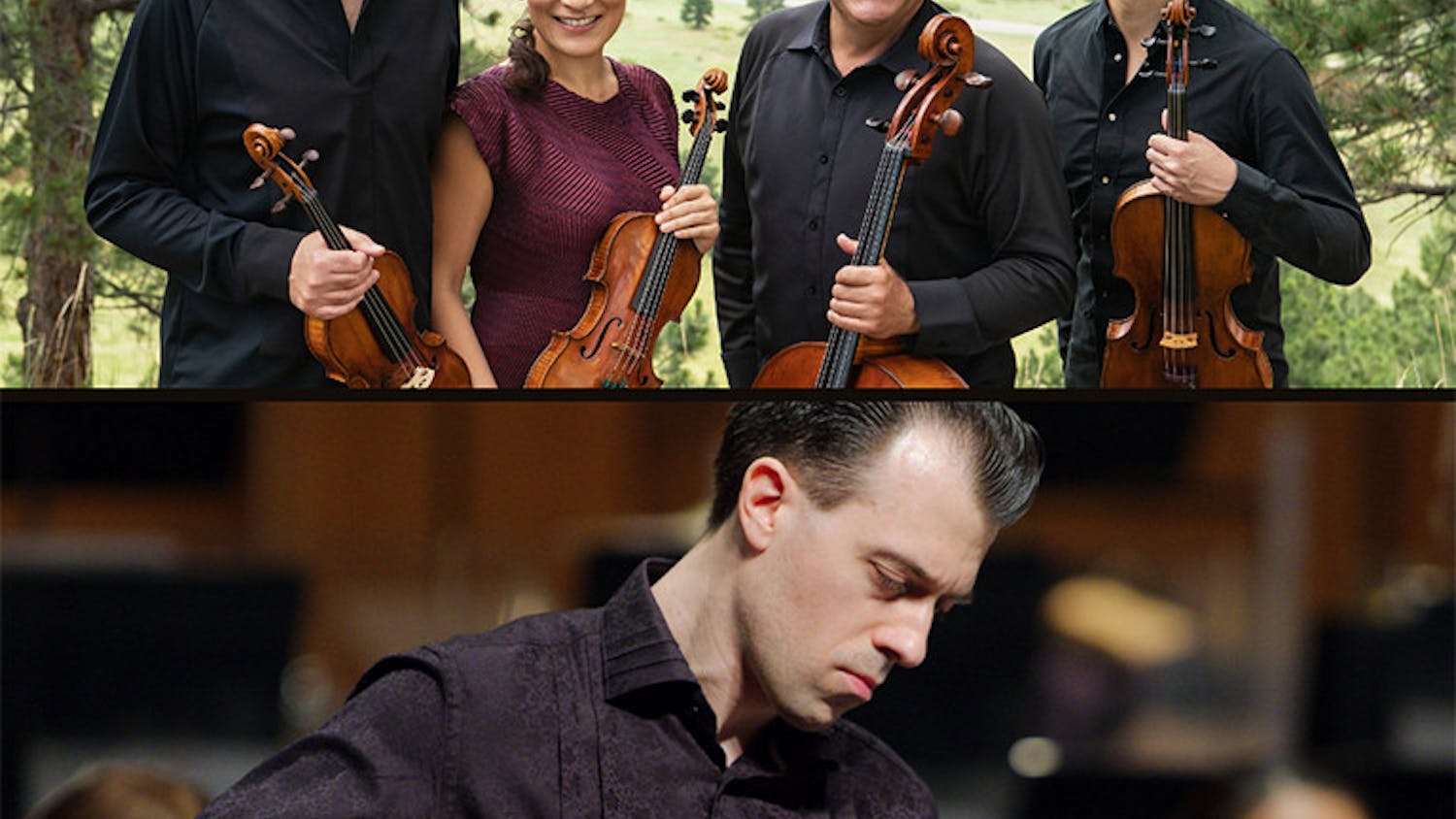Like many young people today, Katie Concannon ’22 has dealt with her share of climate grief. She has searched for relief in the imagination of different visions of the future. One such experiment was her Tidal Shift Award-winning sculpture, “What We Left Behind,” based on her experiences with climate activism and the emotions surrounding it here in Vermont.
Concannon had one such experience a few months after the groundbreaking 2018 Intergovernmental Panel on Climate Change (IPCC) report was released in the spring of 2019. 350VT, a statewide branch of the national climate organization 350.org, led a 150-mile march from Middlebury to Montpelier. The walk aimed to celebrate victories within the climate justice movement, grieve the losses local communities have faced as a result of fossil fuel infrastructure and advocate for a fossil fuel infrastructure ban in Vermont.
“It felt good to be a part of something,” Concannon said. Participants hiked along state roads, experiencing intrastate travel at a slower, more intentional pace that provided opportunities to connect with the landscape in new ways. Concannon became interested in the liminal spaces at the sides of highways and state roads, where she saw resilient organisms thriving amidst the litter of an apathetic society.
Flash forward almost three years to January 2022 when Concannon became inspired to explore her observations and experiences from the trek through art. For a J-Term project co-advised by Assistant Professor of American Studies Ellery Foutch and Assistant Professor of Environmental Studies Daniel Suarez, Concannon created a sculpture made of found objects, both plastic and organic. Upon studying Hindu shrines in “Religion, Culture and Ecology,” a class taught by Associate Professor of Environmental Studies Rebecca Kneale Gould, Concannon wanted to construct a sort of shrine to a saint of climate action.
The piece itself is made out of a crib painted with medieval-inspired designs and layered with World War II photographs, buttons, fake moss, bones, tiny corked bottles of liquid and a plethora of other colorful, random objects. The choice to make art of the crisis beautiful was intentional. Concannon leaned into postmodernist thoughts about bricolage — collaging out of diverse materials. She actively chose to give religious iconography the same value as litter and symbols of resilient wildlife. This reframing of litter pushes the viewer to reconceptualize their relationship with plastics, all of which will continue to exist on this planet indefinitely.
“Things aren’t just recyclable; they can be seen as precious, as having beauty,” Concannon said. She firmly believes that we cannot abandon the things we’ve made, regardless of their impacts on our environment. We are stuck with the litter of the past, but it can be repurposed to give birth to new art and thus, new worlds.
“If we want the planet to be livable, we have to drastically change so many structures of society that will require entirely new ways of thinking,” Concannon said. “[The role of the artist] is to draw [the change in the zeitgeist] out of the cultural subconscious, making it articulated and visible in a way that people can then build off of.”
When asked about actually pulling the project together, Concannon explained that her creative process was not linear at all. After starting with the idea of constructing a modern reliquary to a saint of climate justice, modeled after the process of encrusting the remains of Catholic saints with jewels in the Middle Ages, Concannon pivoted toward the shrine model, first undertaking a phase of “panic-building” before seeking advice from her mentor.

Concannon gained valuable insight from Professor Foutch. “If your inspiration is like a lamp in your head, then it’s like a light shining onto all of the work that you’re doing. It’s not a one-way street of ‘I’m going to do this, and I’m going to build this.’ It was just ideas synthesized into what the sculpture finally became,” Concannon said of their conversation.
While Concannon had the idea to include a massive tear in the sculptural tapestry of the objects chosen to represent modernity, she ultimately submitted to Foutch’s idea of the lamp, which allowed her work to unfold over time. This artistic endeavor culminated in the award-winning piece that will soon be on display in the Hillcrest Environmental Center.
For the artist, this project was not just a means of expressing the thoughts and feelings surrounding the climate crisis that had been developing during her time at Middlebury. Like the climate walk, it helped Concannon process her climate grief and move into a more hopeful space, grounded in visionary action. After graduation, Concannon will continue her work in design and art as a graduate student at the University of Texas at Austin.




